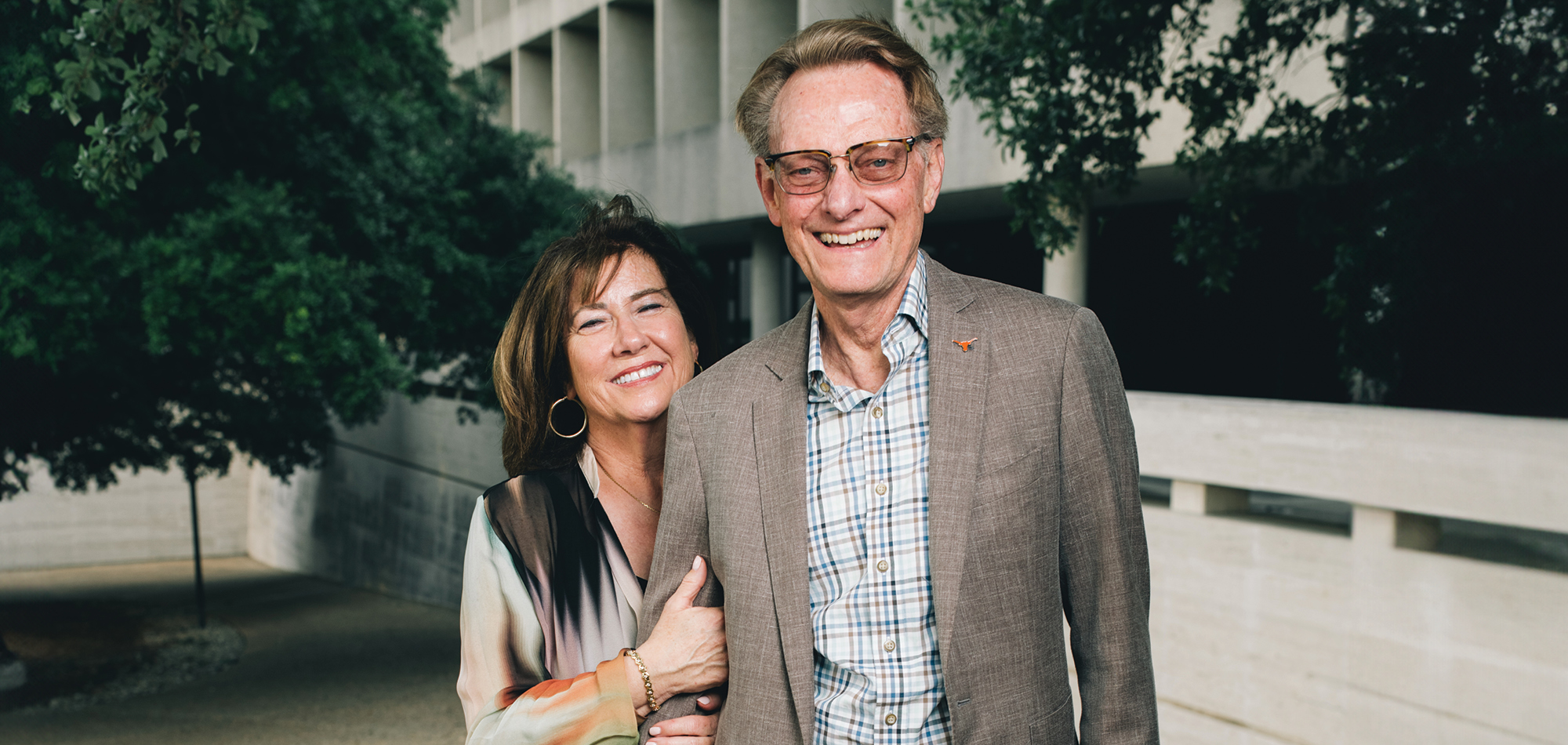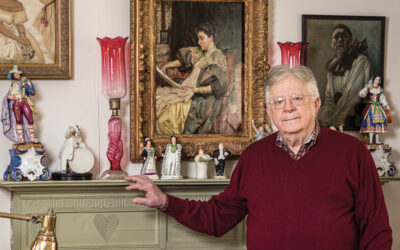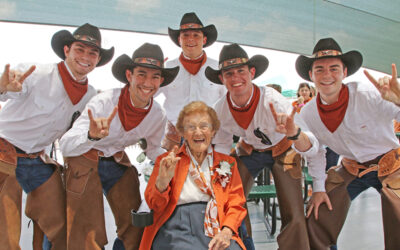Meant to Be

Before he was even 10 years old, Terry Box (B.A. ’73) knew he wanted to be a Longhorn. The Waxahachie native was watching a football game on television in the late 1950s — at a time when the Longhorns’ iconic burnt-orange uniform would appear in only black and white on TV screens — and decided then he would attend The University of Texas at Austin.
Of course, not all childhood dreams come to pass, but Terry’s determination and excellent scholastic record in high school helped him achieve his goal. Now a resident of Utah, Terry continues to hold Texas and UT close to his heart. In appreciation for the education he received and the life opportunities it granted, Terry and his wife Lee Anne have created an endowed scholarship in the College of Education as well as a gift of black-and-white art photographs to the Dolph Briscoe Center for American History.
Twists and Turns
It would be a mistake to equate Terry’s early determination with rigidity. He has remained flexible throughout a life that has presented him with many unexpected events. The first detour Terry navigated was his field of academic study. He started as a mathematics major, but midway through a book report in a German literature class, Terry heard a comment that caused him to rethink his future.
“The professor stopped me midway through my report on ‘Steppenwolf’ — Hermann Hesse’s esoteric novel — and said, ‘This is very good, but it’s very concrete. I think you would do well in medicine.’”
It wasn’t the first time Terry had heard such a comment. His family friend and primary care physician in Waxahachie had frequently suggested Terry should consider becoming a doctor. Terry decided that the universe was trying to tell him something. “With the additional encouragement from the German professor,” he says, “I finished the mathematics courses I needed to get my degree then wound up doing my last year and a half on campus in pre-med.”
From the Forty Acres, Terry headed to UT Southwestern Medical School to earn his medical degree. He left after graduation for a residency program in Utah with the intention to stay for four or five years, then come back home to the Lone Star State. Once again, life had a surprise in store. While in Utah, he met Lee Anne Dunn, a nurse in the hospital’s endoscopy lab, and he followed his heart on a new path. After completing his fellowship, Terry accepted a job offer; several years later, Lee Anne accepted his marriage proposal. “I lost my passport and never got back to Texas,” Terry jokes.
Terry finished his training in gastroenterology and hepatology in 1983 and began what he thought would be a conventional gastrointestinal medical practice. In 1986, however, he was asked to collaborate with the transplant surgeons at Salt Lake City’s LDS Hospital in caring for the state’s first-ever liver transplantation patient. From that point forward, Terry devoted his medical practice to being a transplant hepatologist — a decision that eventually would take on special significance.
In 2002, after more than 15 years of specializing in liver transplantation, Terry ironically found himself in need of his own services. If not for the generosity of an organ donor, Terry would have succumbed to a highly aggressive tumor that had compromised his liver.
“There’s certainly not a week — or sometimes even a day — that goes by that I don’t think back to that event and the incredibly loving and courageous donation that a family decided to make,” says Terry. The experience has left him with a deeper understanding of the importance of philanthropy.
A Gift of Gratitude
Around the time of that same turning point in Terry’s life, he and Lee Anne became interested in collecting documentary photography. Together, they amassed roughly 650 prints. The Boxes believe they have found the perfect home for their collection in UT’s Briscoe Center, one of the nation’s leading research centers for historical study. Terry and Lee Anne’s donated images — depicting daily life, cultural events, architecture, industrialization and politics across the U.S. from the 1920s to 1970s — will add to the Briscoe’s existing collection of 9 million photos and support the Briscoe’s commitment to collecting, preserving and making available the evidence of the past.

For Terry, the gift completes a cycle that began with what UT gave to him. “Our gift reflects our interest in giving back to the entire entity that has enabled us to be where we are today,” says Terry, who credits the University’s culture and values for shaping him. “The equality, the diversity and the inclusivity of The University of Texas made a huge difference in my life. I’m a different person for that and I’m a better person for that.”
The Boxes believe they have found the perfect home for their collection in UT’s Briscoe Center, one of the nation’s leading research centers for historical study.
Texas Leader Magazine
More from this series
Body of Work
The unique gifts of powerlifters Jan and Terry Todd add a lot of weight to the world of sport culture.
All for Opera
Girvice Archer’s 20,000+ pieces of opera memorabilia now enrich the Harry Ransom Center’s cultural archives.
Legendary Lady Longhorn
Betty Grubbs, lifelong champion of Texas Athletics, has given UT a gift worth cheering about.


